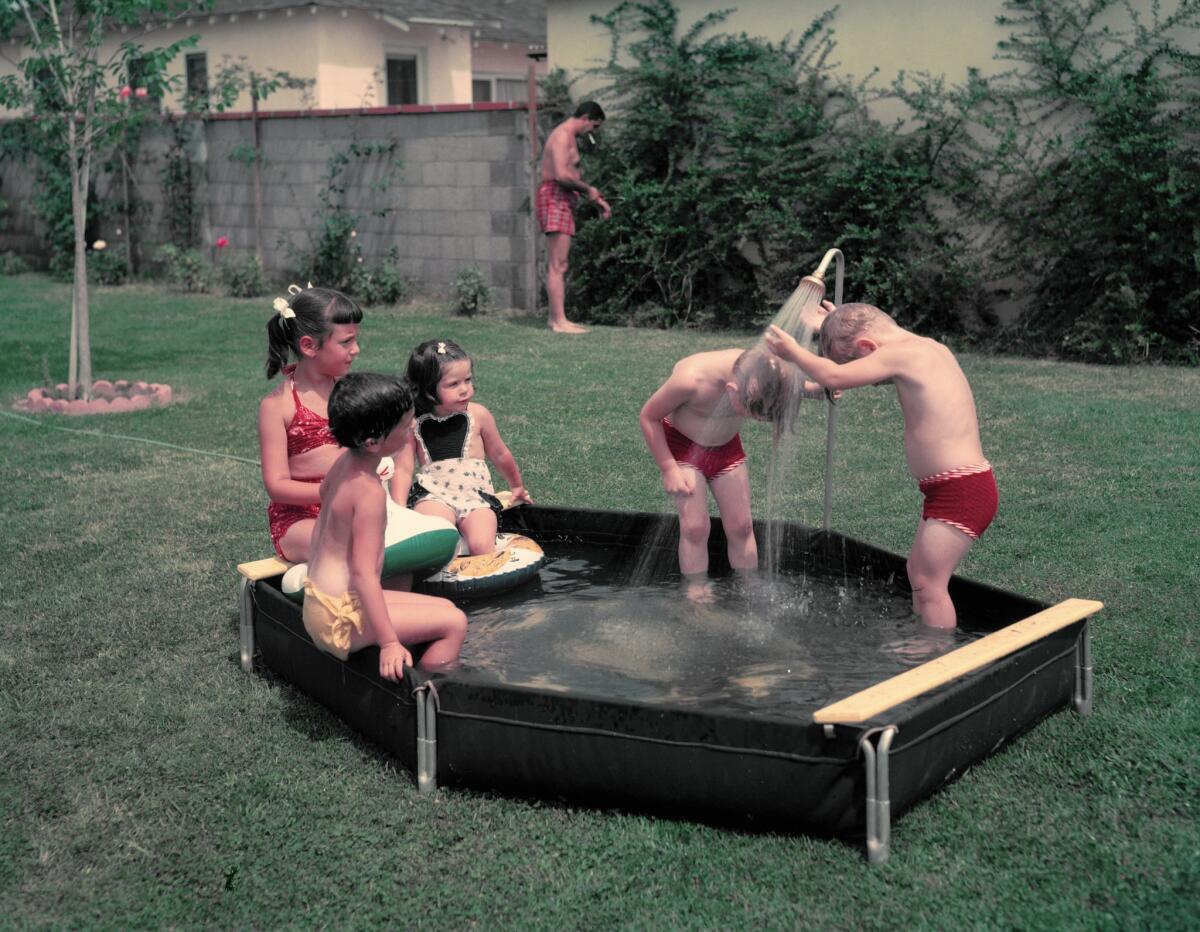Capitol Journal: Governor, show our lawns a little respect

- Share via
from sacramento — Gov. Jerry Brown apparently wants to turn California’s green lawns into the dreary color that matches his name.
There’s family precedent for that. In his last term as governor 50 years ago, Jerry’s father, Pat Brown, repainted the golden dome on the state Capitol a chocolate brown. Holds up better, he explained.
Yes, that’s neither here nor there.
The pathetic thing now is that California’s political elite is trying to make one of civilization’s soothing pleasures — the green lawn — the evil culprit in our historic drought.
In previous droughts, it was the flush toilet. And the solution was a brick in the water tank — not a new reservoir to capture runoff when rain returned.
Never mind that residential lawns soak up only maybe 5% of developed water in California. All residential outdoor use — including pools, shrubs and trees — amounts to 6.6%.
As everyone knows by now, total urban use — showers, washers, pools, sprinklers, businesses, golf courses, ball fields — account for just 20% of human water consumption.
Agriculture devours 80%, much of it in the semiarid San Joaquin Valley, where growers increasingly have been planting thirsty nut orchards, mainly for very profitable exporting overseas. Maybe we could put a moratorium on new tree plantings while we’re tearing out lawns.
Absolutely not, says the governor. That would be government acting like Big Brother. Guess it’s little brother who’s going after our lawns.
Brown has never been much of a lawn guy anyway, preferring to live in apartments and lofts.
OK, maybe it’s inevitable that we must sacrifice our green grass when the government is trying to cope with a four-year drought that — who knows? — could linger far into the future. But, please, show a little respect for what we’re being asked to give up.
Instead, the political establishment disparages and insults. Its mantra is along the lines of what state water director Mark Cowin, who grew up on a San Joaquin Valley farm, told me recently: “If the lawn in your frontyard is just to look at and to bring someone in to mow, what’s the point?”
The point is an eye-pleasing delight that induces tranquility and even can serve as a cheap shrink.
“Definitely lawns add beauty and serenity to a landscape,” says Sandra Giarde, executive director of the California Landscape Contractors Assn. “There’s something to turning around and looking back at a beautiful lawn.”
True, Giarde has a vested interest in lawns because of her job. But her members also sell what Brown is peddling: drought-tolerant landscaping. Ground cover and shrubbery such as lamb’s ears, blue oat grass (looks like a bristly porcupine), lavender and blue sage. Good vegetation for snakes to hide in.
“If you want a place for your children to go out and run around and tumble and play, it’s hard to do that in lavender bushes,” Giarde says.
No, you can’t beat a lawn for playing catch with your son or kicking around a soccer ball with the daughter. Hard to set up a croquet set in ground cover. And it’s always a joy to watch the grandkids skip across the front lawn to the door.
It doesn’t produce income like an almond orchard, lawn critics argue. But it does enhance property value and can keep the neighborhood mellow.
If a green lawn isn’t important to you, there are many other places to call home in the developing countries of Central America, Africa and the Middle East, where dirt dominates. The Communist Chinese ripped out lawns established under American and British influence, and we know how polluted their air became.
Grass traps dust, smoke particles and carbon dioxide, keeping the air cleaner and reducing greenhouse gases. It cools temperatures and becomes a sort of air conditioner while saving energy. It absorbs noise.
Long ago, lawns were a luxury of the rich. But eventually they became available to the expanding middle class. With the middle class now contracting, maybe it’s inevitable that lawns are too.
Lawn grasses are not native to this continent, but then neither are most of us.
“I don’t know when our culture decided we needed to look like England,” says Ellen Hanak, who heads a water think tank at the Public Policy Institute of California. “But this is not a good climate to do that.”
Nor to grow some of our crops, I’d contend.
Hanak says California could reduce its urban water use nearly 18% just by not overwatering outside the house.
Yes, Americans tend to overdo a lot of things — like eating. Which brings us back to crops. But never mind.
Hanak advocates a middle ground on lawns: “Get rid of the grass that’s strictly ornamental. Keep it in places that people actually go on.”
Maybe. But that could cost families thousands of dollars. If this is such a priority for the governor, he should help them by kicking in meaningful money.
Next week, we’ll learn how many billions in surplus is flowing into the state treasury. A big bucketful should go into residential landscaping.
And a barrel should be poured into systems that use recycled water for sprinkling.
Meanwhile, politicians should remember that lawns are an effective place to post campaign signs.
Homeowners now should be pounding in their own signs for the politicians to read, like a Clint Eastwood character once said: “Get off my lawn!”
Twitter: @LATimesSkelton
More to Read
Sign up for Essential California
The most important California stories and recommendations in your inbox every morning.
You may occasionally receive promotional content from the Los Angeles Times.














